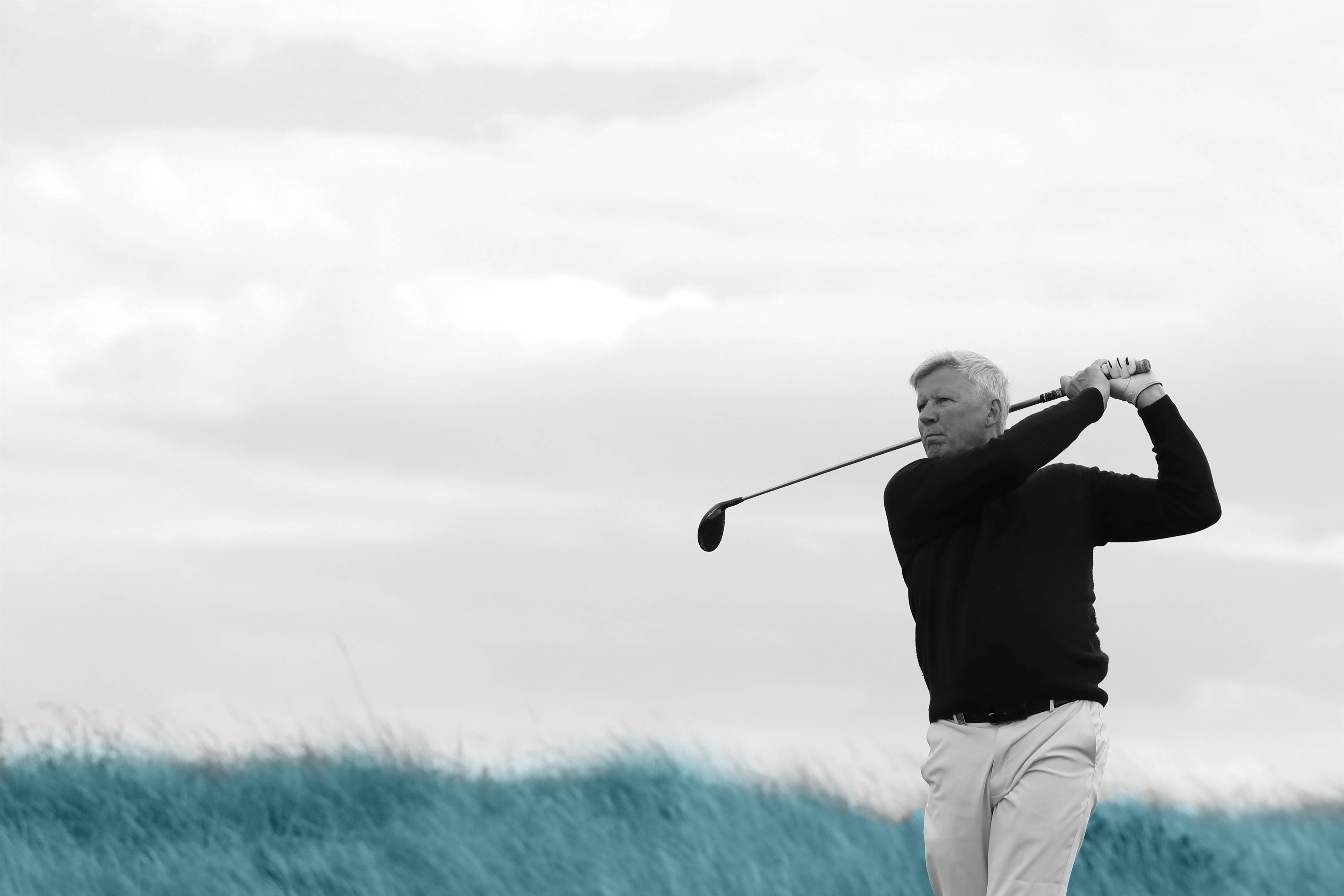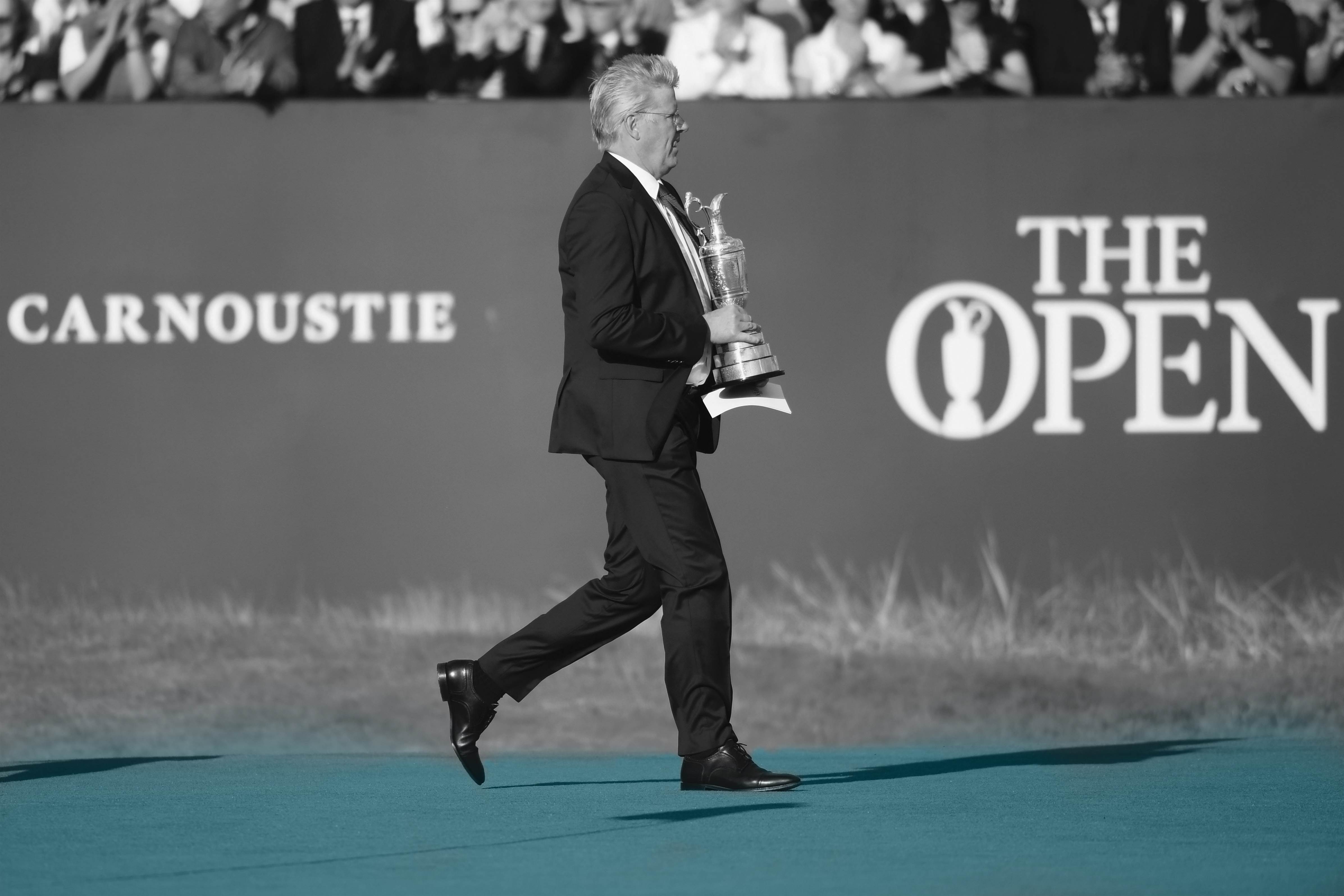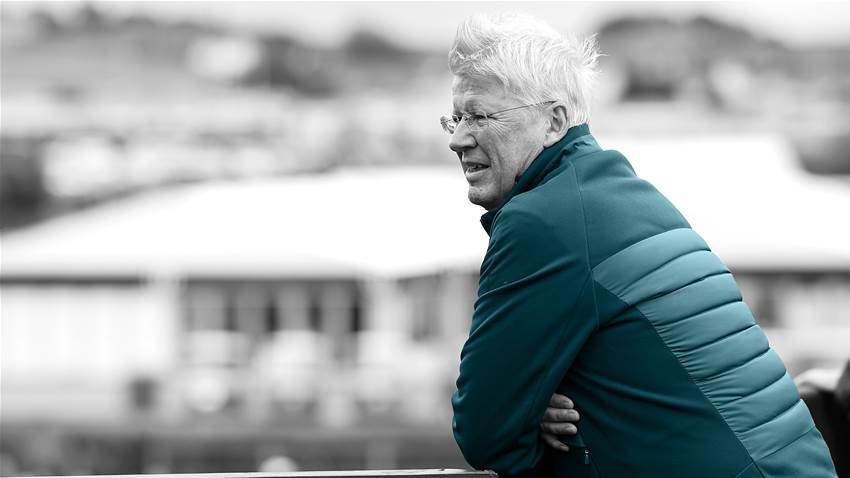The R&A chief sits down to talk about the biggest issues facing golf, from grass roots participation numbers to the distance debate, gender equality, slow play and the Home of Golf, St Andrews.
You’ve been in this job a wee while now. What have you made of it so far?
We could be here for an hour just on that question alone. I quite often go back and think about my interview five years ago. I’ve played golf all my life. Club golf. I love the game. But my interests were my family and business. I took from the game more than I gave. But I’ve always known there is something different about golf too. It was a huge surprise when I was asked to interview.
You didn’t apply?
No, I didn’t. If I’m honest, I didn’t even know it was open. I got a phone call asking if I wanted to interview and I didn’t even know Peter (Dawson) had retired. So it was a bit of a shock.
I’m hoping you are a bit more on top of things these days.
(laughs) Yes. I had finished working (for Deutsche Bank) and was actually playing golf full-time. But I didn’t enjoy playing every day as much as I thought I would. I really missed being with people.
So, four years in, I have realised that the great thing about this job is that it blends my passion for the very best sport with being there to see the very best perform. I have been slightly surprised by how passionate I have become about getting more people playing.
My sons both play. I wanted them to play team sports when they were younger. But now I am passionate about the future of the game.
Too much time is spent talking about the best players, which is enjoyable. But only one percent play golf for money; 99 percent play for love. I want that 99 percent to grow.
There are lots of very good and talented commercial people in the golf business. I hadn’t met any of them five years ago, but today I would put them up there alongside anyone in any of the industries I have worked in previously. We are sometimes very critical of our leaders. But we should be thankful for them. They are pretty damn good at what they do.
If I can interrupt, is the golf club system still fit for purpose? Is it really the best way to grow the game in the modern world? If Joe Golfer has, say, $1,000 to spend on his game annually, he seems to be spending more and more of it on playing a variety of courses rather than joining a club.
I look at this through the lens of being relevant to the consumer. And commercially. The traditional way of measuring the health of the game – if we can stick to Great Britain & Ireland for the moment, but I’m sure it is similar in Australia – is to add up golf club members. It’s about one million right now. That’s still a lot of people. But that figure completely misses what golf is about today.
With the European Tour, we have done a different market survey. We asked how many people “consume” golf. That mean 18-holes, nine-holes, driving ranges, par-3 courses, pitch-and putt courses, Top Golf (which is not that big here yet but is coming). When you put that number together it comes to about 12 million.

So, the golf club is increasingly out-of-date?
Take out ‘elite’ clubs from this. They will be fine. They always will be. And the very simple clubs will be fine too. They are not the issue. The issue is the middle. I am convinced that you have to ask the question: if there are 12 million people out there, why are 11 million of them not buying into golf clubs?
The reason for that, in my opinion, is that too many of the clubs that are struggling are trying to sell a product people don’t want to buy. It could be that they are not family-friendly. It could be that it is not open. It could be too restrictive on dress-code. It could be not inclusive enough. It could be that they don’t have wi-fi. It could be any of those.
If you go to a driving range now – and I do a lot because I and my senior staff have a responsibility to play golf just to see what is going on out there – and if they don’t have wi-fi or you can’t get a proper cup of coffee, you don’t go back. My challenge to golf clubs is to ask themselves: are they selling a product enough people want to buy?
The days are long gone when youngsters adjusted to the golf club. That world is gone. The world is full of choice now. And I think golf clubs have a fantastic opportunity to evolve their product. I’m not a fan of the phrase “nomad golfers;” they are people who pay and play. But the majority of them pay and play at the same two or three courses.
How many of those clubs have digital information on those people? How many are talking to those people and asking what type of membership would they like? What could we do to help you?
Say a 15-round per annum membership….
Whatever. Go and look at clubs in this country who have embraced this. Go and look at Royal Norwich Golf Club. Go and look and look at Goodwood Golf, where they have very cleverly dropped the word “golf.” They have a flexible, family-oriented membership. And it is full, with a waiting-list. They are selling a product people want to buy.
There is a driving range near where I live in Kirkcaldy, called Wellsgreen. I go in there as a “secret shopper.” And it’s full. The car park is full. The bays are full. And what I see is people having fun and being with their friends. The game started in Scotland as a game for the people. But more importantly, it was part of community life. And we have lost our way there. We need to be more egalitarian. That is where the future is.
Let’s move onto the new rules that were introduced a year ago. I’m sure you have had plenty of feedback. What has worked well and what hasn’t?
A few months ago, I said the first few months had perhaps not gone as well as we would have hoped. But we had imposed a huge amount of change. And that has played out a bit since I spoke. The new rules are becoming more accepted. They are bedding-in.
We are especially pleased to see that time to play has improved a lot. There is lots of evidence of that. The three-minute rule makes a difference.

Has putting with the pin-in helped too? Pace of play was really why you did that right?
Without a doubt. The sole reason was to speed up play. Particularly on courses with big greens, that has made a significant impact. In the professional game we have seen some strong leadership from Keith (Pelley) and Jay (Monahan). Mike (Whan) too, although the LPGA adopted it much more easily.
We went through the majors season without any really contentious issues. So, we’re in a good place. But we’re still watching. There was quite a lot of talk, for example, about the knee-high drop.
Does it need to be that specific?
You need to have some sort of black-and-white in place. But the intent was to get the ball back in play as quickly and as simply as possible. And that has been the case. We are seeing a lot less re-dropping and placing, which is what we intended. But we are keeping our eye on it all.
Is there anything that does need tweaking?
We have heard from greenskeepers. There is the potential for damage as people remove the ball and leave the flagstick in. It’s not universal, more on courses where the greens are less firm. On links courses it is less of an issue. And I’m sure it is the same on many in Australia. But we are looking at that.
We have had a lot more applications for equipment standards on flagsticks. And we are thinking about that.
Let’s talk about the course outside your office window. I had a walk around the Old Course and figured out you have to walk over 2,000 yards to go nowhere between green, next tee and back again. And there is a lot more long grass out there than I can ever remember. Are there reasons for that? Should there be any long grass out there?
The great thing about the Old Course is that it has never been the same for long since it was originally built. Or laid-out. Another great thing is that there are plenty of people out there who are very knowledgeable about it and have opinions about it. It’s like the economy though. Economists tend to have a range of views. I think that is healthy.
We have the 2021 Open coming up. I’ve been responsible for four Opens and when I am finished working my time, doing that will go down as one of the top-five experiences of my life. It is a wonderful thing to do. But it’s also a huge responsibility. To history. The whole game is underpinned by the history of the Open. And I feel that sense of history.
I also feel a responsibility towards making the game more modern and relevant to today’s society. The Open is the only major – for the men – played outside America. It’s different for the players. It’s not like anything they play week-in and week-out and we have to get it right. So already what is going to happen in 2021 on the course is on my mind.
The guy, who has played golf better than anyone ever has, is still out there.
Yes. I’m a huge Nicklaus fan. But I’m also a huge Seve fan. There are more pictures of him in this office than there has ever been. I love watching Tiger. I love watching Rory. I think Brooks Koepka is a wonderful player. And I could go on and on. It will be a wonderful experience watching them play here in 2021.
A huge part of our responsibility is how we set-up the course. And I know everyone has a different view on that. My biggest worry at Portrush last year wasn’t the golf course though. Nobody of that standard had played that course off the back tees with a card in their hands.
The set-up team here are as good as anyone in the world at what they do. Particularly a links.
The best compliment I can ever pay Grant Moir (R&A Director of Rules and course set-up) is that no one knows who he is.
I agree with that. But if you look at our philosophy. What we try to do is set-up a course so that it is fair. That is true to the course management – which is really true here. And is tough. The one thing we can all agree on is that we like to see good shots rewarded. And bad shots not rewarded.
That is getting difficult to do here.
Then let them play. Let them show us how good they are. My emotions memories of our game is when the very best played. And scored. In the last four Opens we have done that - let them play.

My issue has never been with the scoring. If a great player at the top of his game doesn’t shoot a great score there is something wrong with the course.
I was one of the first people to congratulate Branden Grace when he shot 62 at Birkdale in 2017. I don’t worry about the score.
But I worry about how it is achieved.
Yup. But the real defence of a links is the weather. Grant spends three years getting a course ready for an Open. But the only one we have delivered as firm and fast as we would like is Carnoustie in 2018. And even that softened up during the week. But it was wonderful. Every player I met that week had a smile on his face. They were enjoying the challenge.
If we look at the Old Course, one defence is the weather. But it could go the other way. If it is calm…
That’s what I worry about. If the weather is really good players are going to break 60.
If it is calm – or if it rains heavily – every links is at risk from these great players. Because of the way they play today. We will do everything we can to get the course firm and fast. If you went out there now it is already beginning to firm-up, which is how this course should play.
But some of the bunkers are in the rough now.
Only on one hole.
There was more than that. The sixth is just the most egregious example. There’s a few of them.
What I am really looking forward to in 2021 is seeing the pin positions.
That is your biggest defence.
Yes. The pin positions are the real defence of this course. Has been for years and years.
But aren’t they going to have to be ridiculous to keep the scoring manageable? If the weather is good.
I do not believe that any course should be tricked-up. I think they should be fair and tough. But the more I learn about course set-up, the more I realise how good these players are. They can spin the ball on a downslope if you give them half a chance.
The anarchist in me does feel that the 2021 Open might be the tipping point in terms of controlling how far the top players can hit the ball. If the scoring does get to the point where it is a bit silly, could it be the place where that does happen?
I know we will set-up the course tough and fair and let them show us how good they are.
So, you’re not worried about them breaking 60?
As I said, I was first to shake Branden Grace’s hand after his 62. If someone breaks 60 they will have played phenomenal golf.
They will have holed a few putts for sure. But they will have holed them after hitting a lot of wedge approach shots.
Looking at statistics over the last few years, I hadn’t realised how well these guys putt. I’ve been amazed by that.
The improvements in agronomy must have a lot to do with that.
If you look at the scoring. I think I looked at Birkdale last time. I looked at the players who played all four rounds on greens running no faster than 10.5 on the stimpmeter. Over 40 percent of the field averaged 29.something or less in putts. When people talk about how good the best are, not enough attention is paid to how well they putt. Yes, the greens are way better…
Couldn’t you give them a fright by having really slow greens?
(laughs) We come in at maybe 9.5 to 10 on the weekend. We have to be careful in case it gets really windy. And don’t forget, on the Saturday morning of my first Open at Troon in 2016 we didn’t mow the greens. That was a baptism of fire for me. We did nothing with them. We just let the players play.
Related Articles

Huggan: Is McIlroy the best European golfer of all time?

Scottie Scheffler joins Tiger Woods in rarefied air













